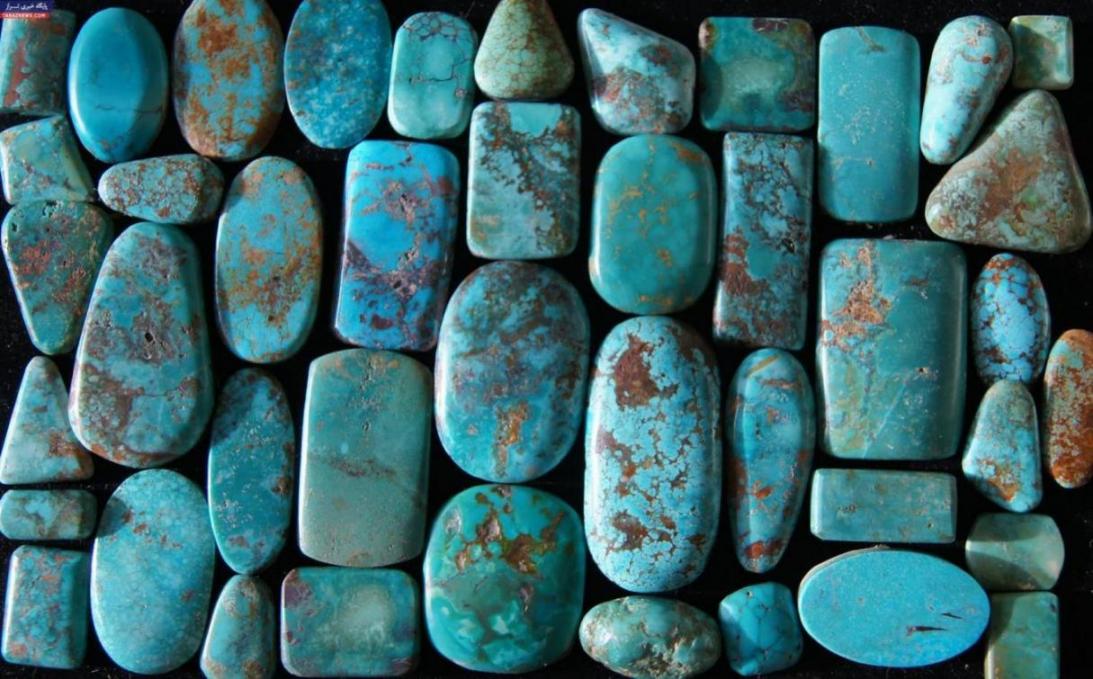The art of turquoise cutting has a rather long history in Iran. Heritage experts are, however, afraid turquoise craft may be declining.
Neyshabur’s turquoise is known as the finest in the world. Turquoise mines near the city, located in Khorasan Razavi Province in northeastern Iran, have supplied the world with the gemstone for at least two millennia. Although Afghanistan, Egypt, the US and China also have turquoise reserves, Neishabour’s turquoise is distinguished for its unique hue.
Turquoise is an opaque, bluish-green mineral that is a hydrous phosphate of copper and aluminum. It is rare and valuable in finer grades and has been prized as a gem and ornamental stone for thousands of years owing to its unique shade.
Khorasan Razavi is home to 300 turquoise-cutting workshops, being the first province in this regard, Iran newspaper reported.
“Turquoise workshops in the city of Mashhad account for 90 percent of the turquoise workshops in the country,” head of Mashhad Turquoise and Agnate Craft Union, Abdolsamad Rahimi-Moghadam was quoted as saying.
“Forty tons of turquoise is annually produced in the province, of which between 15-20 percent is cut and shaped to be used as ornaments,” said member of the National Committee for Developing Jewelry Standards, Seyed Javad Pishbin, adding that this amount accounts for 6 tons of the produced turquoise in the province.
Mount Binalud in the north of Neyshabur embraces the oldest turquoise mine in the country, which is one of its kind in the world, said Rajabali Labbaf-Khaniki, managing director of Khorasan Razavi’s Iran Cultural Heritage, Handicrafts, and Tourism Organization (ICHHTO).
Complications & Suggestions
Despite its long history, turquoise craft is facing problems.
Lack of skilled human resources is a main concern, as “there are only 25 masters who specifically and exclusively work in the field of turquoise cutting and related crafts,” according to the daily.
Another drawback is the lack of proper extraction technologies, experts say. “Turquoise is still extracted by traditional methods like exploding mines,” Pishbin said, describing the process as destructive, as it leads to loss of part of the gemstones.
Changing the extraction methods and making use of up-to-date technologies is necessary.
The artisans involved in the field are also dissatisfied about the way the stone is distributed among producers.
A recent problem endangering Neyshabur’s artifacts are fake turquoise in the market, which are said to be from the US, China, and Tibet.
Import of imitations is a big threat for Neyshabur turquoise craft, Pishbin said.
Nevertheless, no official statistics is available about the imports and exports, he lamented. “Trade in the field is mostly done via unauthorized channels,” producing high profits for the dealers, he noted.
Iranian turquoise is mainly–via unofficial channels-- sent to East Asian and Persian Gulf countries as well as Europe and the US, and accounts for 80 percent of Neyshabur’s turquoise, according to unofficial statistics.
While the gemstone is globally known to originate in Iran, some mistake it to be from Turkey, as the word turquoise was derived around the 16th century from the French language turquie. Hossein Khajeh Bidokhti, former official at the Handicraft believes Turkey was only a passage through which the Iranian gemstone made its way to Europe.
Experts suggest that registering the turquoise craft in UNESCO in the name of Iran can help enhance the craft in the country.
The craft is capable of attracting foreign investment, said Rahimi-Moghadam, adding that “this will help create jobs.”


